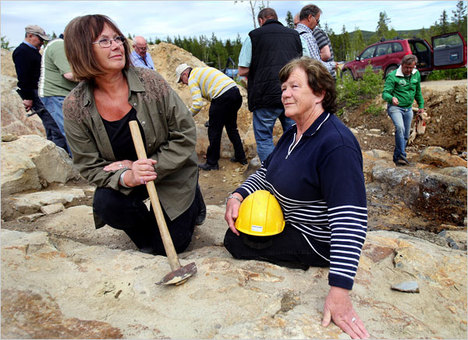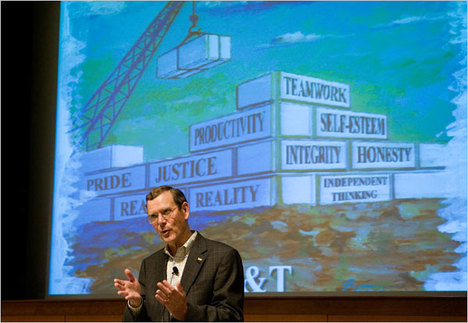(p. A9) This is a good time to recall that the venture-capital industry was born as a reaction to New Deal regulations that stifled capital and prolonged the Depression. The country’s first venture-capital firm (other than family-run funds) was American Research and Development, planned in the 1930s and launched after World War II in Boston.
Its leader was longtime Harvard Business School professor Georges Doriot, who is the subject of a fascinating recent biography, “Creative Capital,” by Spencer Ante. Mr. Ante, a BusinessWeek editor, tells me that as he researched the topic “one of the most surprising things I learned was how concerned financiers and industrialists had become about the riskless economy in direct response to the New Deal. Even in the 1930s, people understood that small business was the lifeblood of the economy.”
American Research and Development backed early-stage companies deemed too risky by banks and investment trusts at the time. The firm was an early investor in Digital Equipment Corp., the Boston-area company that revolutionized computing.
Despite financial success, the history of the firm is a reminder that our regulatory system, by its nature focused on avoiding risk, has a hard time dealing with investment firms whose mission is to take risks. Doriot was a well-known name in commerce and academia from the 1940s through the 1970s. He was the first French graduate of Harvard Business School, a founder of the INSEAD business school and a leading adviser to the U.S. military.
But even as a pillar of Boston’s commercial and academic worlds, Doriot had many run-ins with federal regulators. Over the years, regulators dictated compensation for the American Research and Development staff, tried to force disclosure of the performance of its early-stage companies, and second-guessed how it tracked the valuations of its investments.
The Securities and Exchange Commission hounded the company so often that Doriot once wrote a three-page memo saying, “ARD has more knowledge of what is right and wrong than the average person at the SEC.” He was prudent enough not to send it. He did mail another memo to the SEC enforcement office in Boston, in 1965: “I rather resent, after 20 years of experience, to have two men come here, spend two days, and tell us that we do not know what we are doing.”
. . .
No venture capital firm has asked to be bailed out, and none are too big to fail. As hard as it is for regulators to understand, the nature of venture capital is such that it should not even aspire to be a low-risk enterprise
.
For the full commentary, see:
L. GORDON CROVITZ. “No Such Thing as Riskless Venture Capital; New regulations could retard the innovation our economy needs.” The Wall Street Journal (Weds., AUGUST 9, 2009): A19.
(Note: ellipsis added.)






